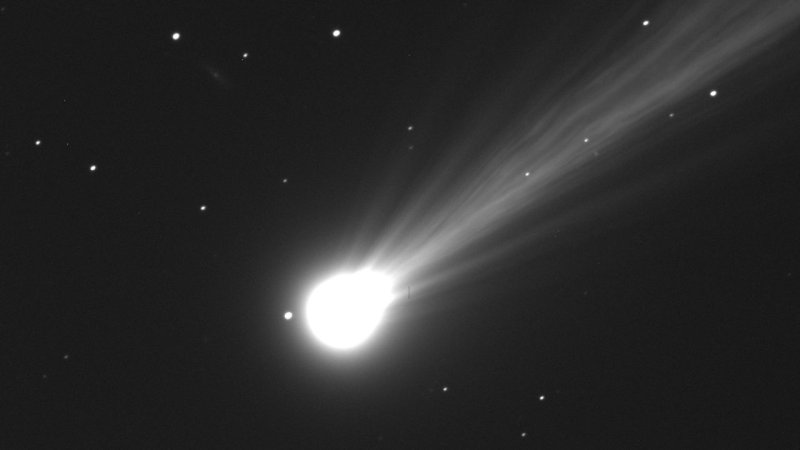
Newly discovered Comet Nishimura soon swing by Earth

Japanese space photographer Hideo Nishimura first observed Comet Nishimura in early August as he was taking images of the night sky, according to EarthSky.
Since then, the celestial object has increased in brightness as it travels through the inner solar system in
Japanese space photographer Hideo Nishimura first observed Comet Nishimura in early August as he was taking images of the night sky, according to EarthSky.
Since then, the celestial object has increased in brightness as it travels through the inner solar system in an orbit around the sun.
World
Lowell Observatory astronomer Dr. Larry Wasserman captured an image of Comet Nishimura using the Lowell Discovery Telescope (4.3-m diameter) Wednesday morning during twilight.
Larry Wasserman/Matthew Knight/Dave Schleicher/Lowell Observatory
Editor’s Note: Sign up for CNN’s Wonder Theory science newsletter. Explore the universe with news on fascinating discoveries, scientific advancements and more.
A newly discovered comet will be visible at times as it flies by Earth next week. But spotting it will take some know-how.
Japanese space photographer Hideo Nishimura first observed Comet Nishimura in early August as he was taking images of the night sky, according to EarthSky.
Since then, the celestial object has increased in brightness as it travels through the inner solar system in an orbit around the sun.
The comet will make its closest approach to Earth on Tuesday, coming within 78 million miles (125 million kilometers), which means it’s potentially visible over the next five days.
Japan launches X-ray satellite, ‘Moon Sniper’ lunar lander
It will get much closer to the sun, passing within 21 million miles (nearly 34 million kilometers) of the star on September 17, according to Alan Hale, co-discoverer of Comet Hale-Bopp and founder and president of the Earthrise Institute.
Nishimura completes one orbit about every 430 to 440 years, “which means the last time it passed close to the Sun (and might have come closer to Earth) was around the year 1590, before the invention of the telescope,” Dr. Paul Chodas, director of NASA’s Center for Near Earth Object Studies at the Jet Propulsion Laboratory in Pasadena, California, wrote in an email. “We don’t know whether it got bright enough to be seen with (the) naked eye back then.”
No comets recorded during that time frame appear to correspond with Nishimura, but it would’ve had to be quite bright to be seen, Hale said.
How to see Comet Nishimura
The comet is barely bright enough to be visible from Earth due to distance and will be moving close to the horizon, so binoculars are the best way to see it, Chodas said. And dark skies away from city lights provide optimal viewing. Source:CNN


